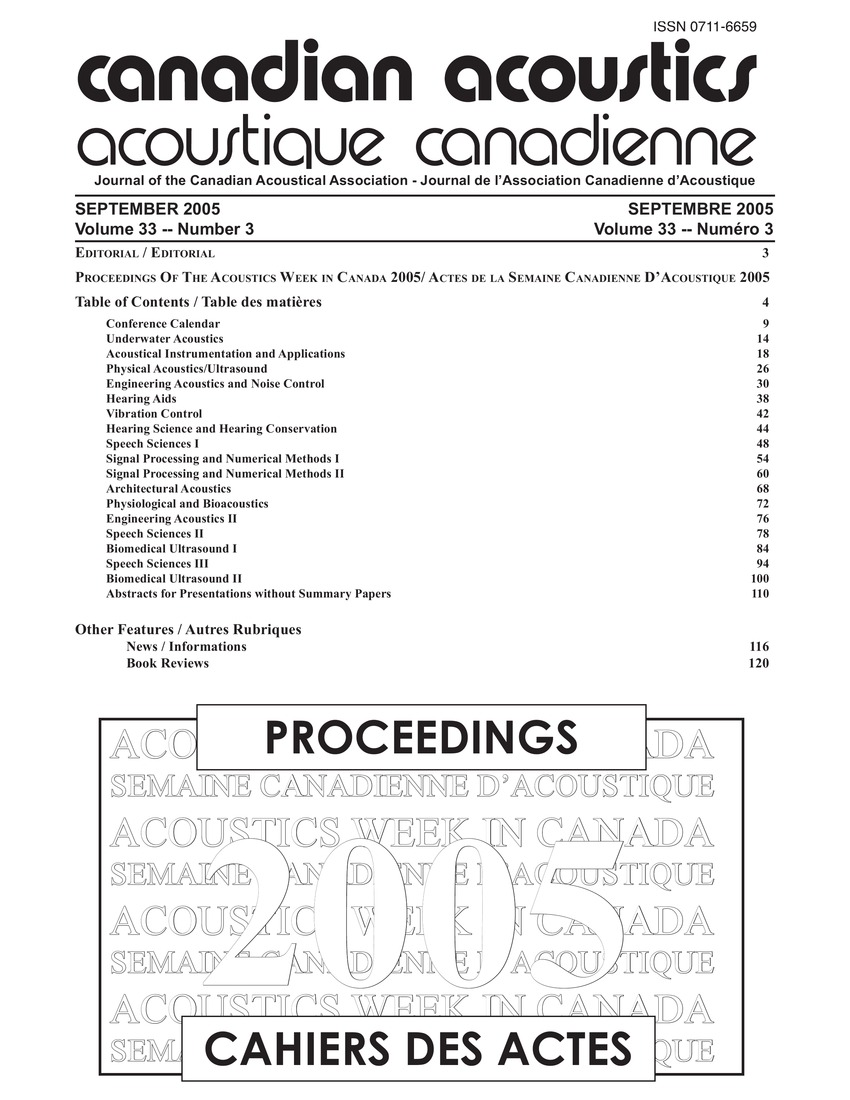Acoustic and articulatory space before and after lateral tongue resections in oral cancer patients
Mots-clés :
Biological organs, Biomechanics, Speech analysis, Tumors, Formant frequencies, Lateral tongue resections, Oral cancer, VCN sequencesRésumé
The impact of lateral tongue resections on midsagittal tongue movement and vowel production was analyzed. Nine patients, male and female from 30 to 55 years of age underwent partial lateral tongue resections with different reconstructions. The participants' vowel space was evaluated by measuring the first and second formant frequencies during the steady-state phases of the second vowel in each of the VCN sequences. The measurement values for the motion ranges at different grid angles demonstrated that the distance of the midsagittal tongue surface increased posoperatively.Fichiers supplémentaires
Publié-e
Comment citer
Numéro
Rubrique
Licence
Author Licensing Addendum
This Licensing Addendum ("Addendum") is entered into between the undersigned Author(s) and Canadian Acoustics journal published by the Canadian Acoustical Association (hereinafter referred to as the "Publisher"). The Author(s) and the Publisher agree as follows:
-
Retained Rights: The Author(s) retain(s) the following rights:
- The right to reproduce, distribute, and publicly display the Work on the Author's personal website or the website of the Author's institution.
- The right to use the Work in the Author's teaching activities and presentations.
- The right to include the Work in a compilation for the Author's personal use, not for sale.
-
Grant of License: The Author(s) grant(s) to the Publisher a worldwide exclusive license to publish, reproduce, distribute, and display the Work in Canadian Acoustics and any other formats and media deemed appropriate by the Publisher.
-
Attribution: The Publisher agrees to include proper attribution to the Author(s) in all publications and reproductions of the Work.
-
No Conflict: This Addendum is intended to be in harmony with, and not in conflict with, the terms and conditions of the original agreement entered into between the Author(s) and the Publisher.
-
Copyright Clause: Copyright on articles is held by the Author(s). The corresponding Author has the right to grant on behalf of all Authors and does grant on behalf of all Authors, a worldwide exclusive license to the Publisher and its licensees in perpetuity, in all forms, formats, and media (whether known now or created in the future), including but not limited to the rights to publish, reproduce, distribute, display, store, translate, create adaptations, reprints, include within collections, and create summaries, extracts, and/or abstracts of the Contribution.


